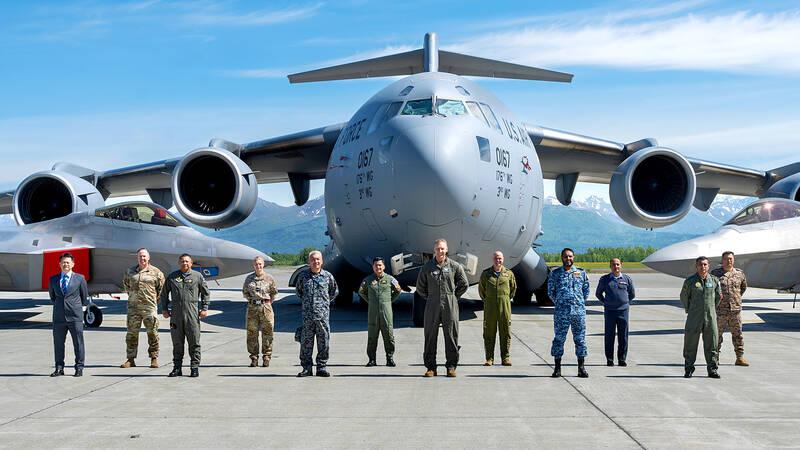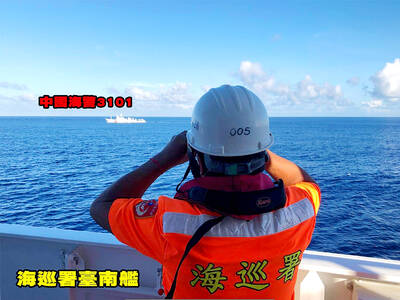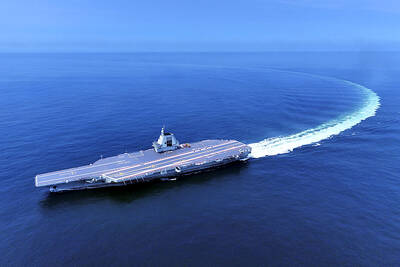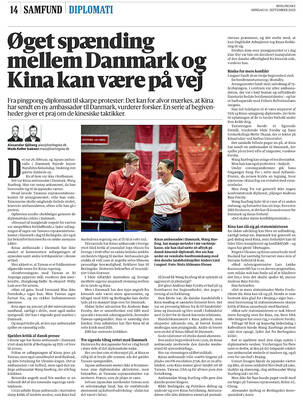US Air Force leaders yesterday voiced concerns about the People’s Liberation Army’s (PLA) missile capabilities and its development of a “kill web,” saying that the US Department of Defense’s budget request for next year prioritizes bolstering defenses in the Indo-Pacific region due to the increasing threat posed by China.
At the same time, US experts said that a full-scale Chinese invasion is risky and unlikely, with Beijing more likely to pursue coercive tactics such as political warfare or blockades to achieve its goals.
Senior air force and US Space Force leaders, including US Secretary of the Air Force Troy Meink and Chief of Space Operations General Chance Saltzman, yesterday attended a US Senate subcommittee hearing to discuss next year’s defense budget.

Photo courtesy of the US Department of Defense
Meink and Saltzman both said that the PLA is advancing its ballistic capabilities.
China has more than 900 short-range missiles capable of hitting Taiwan and 400 land-based missiles that can reach the first island chain, they said.
It also has 1,300 medium-range ballistic missiles that can strike the second island chain, 500 intermediate-range ballistic missiles capable of hitting parts of Alaska and Australia, and more than 400 intercontinental ballistic missiles capable of delivering nuclear weapons globally, they said.
Saltzman said he is most concerned about China’s “kill web,” which enables the PLA to track US joint forces and operations from long distances.
Saltzman in March last year said that China had already launched more than 470 intelligence, surveillance and reconnaissance satellites, “which are feeding information into a powerful sensor-to-shooter kill web.”
This type of “kill web,” which links sensors directly to strike units, accelerates attack speed through data sharing and automation, enabling strikes to be completed within seconds, he said.
Meanwhile, the Stimson Center, a Washington-based think tank, held a seminar titled “The Realities of an Invasion of Taiwan,” with senior fellow Dan Grazier, fellow James Siebens and research associate MacKenna Rawlins analyzing the strategic, political, economic and military factors that China might consider in planning an invasion of Taiwan.
Based on research that included field investigations in Taiwan, Grazier and his colleagues said that launching an amphibious assault on the nation would be fraught with risks, including nuclear escalation, political instability and economic repercussions, with a low probability of success.
The risks China would face in invading Taiwan far outweigh any potential gains, Grazier said.
China has many other military options at its disposal that could be more advantageous and easier to execute, such as a blockade, Siebens said, adding that China is advancing unification through political warfare and coercion.
The US must first help Taiwan respond to the actions Beijing is already undertaking, rather than focusing too heavily on a large-scale invasion, he said.
Should China decide to invade, there would be certain early indicators, including the weakening of Taiwan’s defenses, seizure of its islands and increased coercive measures, he added.
The US and other like-minded nations need to emphasize how important their economic relationships with Taiwan are to their own national interests, Siebens said.
China must understand that any attempt to impose a maritime blockade on Taiwan would not only constitute an act of aggression against Taiwan, but also against all of its partners, he said.

The Coast Guard Administration (CGA) yesterday said it had deployed patrol vessels to expel a China Coast Guard ship and a Chinese fishing boat near Pratas Island (Dongsha Island, 東沙群島) in the South China Sea. The China Coast Guard vessel was 28 nautical miles (52km) northeast of Pratas at 6:15am on Thursday, approaching the island’s restricted waters, which extend 24 nautical miles from its shoreline, the CGA’s Dongsha-Nansha Branch said in a statement. The Tainan, a 2,000-tonne cutter, was deployed by the CGA to shadow the Chinese ship, which left the area at 2:39pm on Friday, the statement said. At 6:31pm on Friday,

The Chinese People’s Liberation Army Navy’s (PLAN) third aircraft carrier, the Fujian, would pose a steep challenge to Taiwan’s ability to defend itself against a full-scale invasion, a defense expert said yesterday. Institute of National Defense and Security Research analyst Chieh Chung (揭仲) made the comment hours after the PLAN confirmed the carrier recently passed through the Taiwan Strait to conduct “scientific research tests and training missions” in the South China Sea. China has two carriers in operation — the Liaoning and the Shandong — with the Fujian undergoing sea trials. Although the PLAN needs time to train the Fujian’s air wing and

The American Institute in Taiwan (AIT) put Taiwan in danger, Ma Ying-jeou Foundation director Hsiao Hsu-tsen (蕭旭岑) said yesterday, hours after the de facto US embassy said that Beijing had misinterpreted World War II-era documents to isolate Taiwan. The AIT’s comments harmed the Republic of China’s (ROC) national interests and contradicted a part of the “six assurances” stipulating that the US would not change its official position on Taiwan’s sovereignty, Hsiao said. The “six assurances,” which were given by then-US president Ronald Reagan to Taiwan in 1982, say that Washington would not set a date for ending arm sales to Taiwan, consult

A Taiwanese academic yesterday said that Chinese Ambassador to Denmark Wang Xuefeng (王雪峰) disrespected Denmark and Japan when he earlier this year allegedly asked Japan’s embassy to make Taiwan’s representatives leave an event in Copenhagen. The Danish-language Berlingske on Sunday reported the incident in an article with the headline “The emperor’s birthday ended in drama in Copenhagen: More conflict may be on the way between Denmark and China.” It said that on Feb. 26, the Japanese embassy in Denmark held an event for Japanese Emperor Naruhito’s birthday, with about 200 guests in attendance, including representatives from Taiwan. After addressing the Japanese hosts, Wang